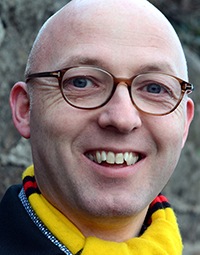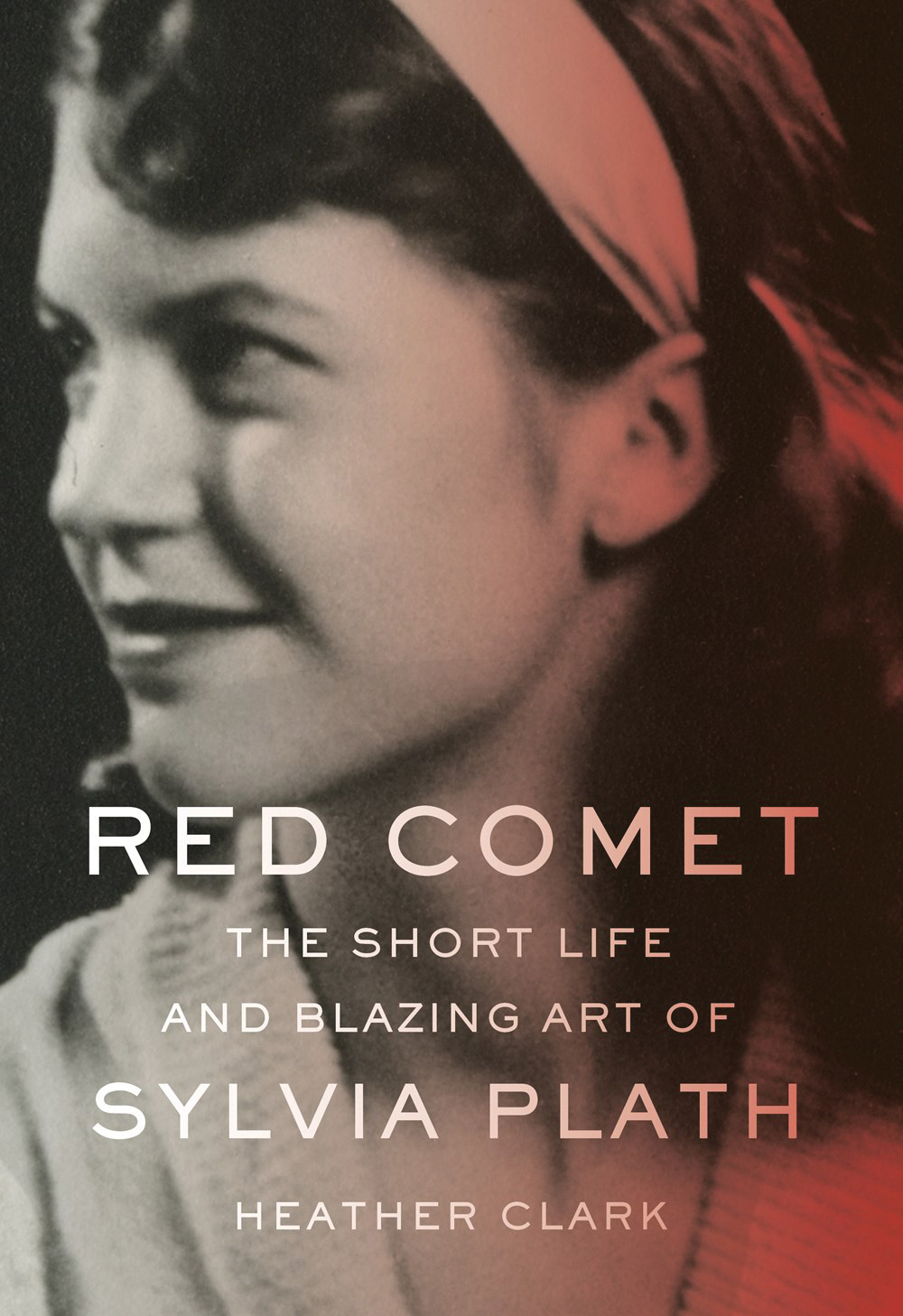Have you decided on your New Year’s resolutions yet? You know, the ones you follow with zeal in January, limp along with through February and abandon sheepishly sometime before the first crocuses bloom? If you’ve ever found it tough to stick with your well-intentioned efforts to change, these books will offer a fresh take on what it means to be happy and healthy and how to really transform your life—for good.
LIFE SKILLS
Growing up as a “fortunate son” in New York (his father was the storied New Yorker writer Brendan Gill), Michael Gates Gill expected the world and, for the most part, he got it: a charmed childhood, a Yale education, a high-powered career. His best-selling memoir, How Starbucks Saved My Life, detailed how in one year, Gill lost his job as an advertising executive, got divorced, was diagnosed with a brain tumor and took a job as a Starbucks barista. In this poignant follow-up, How to Save Your Own Life, Gill—who still serves coffee at a New York Starbucks—examines what exactly he learned during that year. His 15 truisms on how to savor ordinary moments are simple yet powerful reminders to respect one another, learn from those around you and really listen. One of his lessons, “Lose your watch (and cell phone and PDA),” is particularly noteworthy in our tech-obsessed world. “You can’t return a call or take a photo without seeing precisely what time it is,” writes Gill. “In many ways we have become mental and emotional slaves to the constant, finite calculations and it is hard to resist such an anxious focus on every ticking second.”
Whether or not you agree with his less-is-more premise, it’s hard not to be drawn to Gill and his message—he writes plainly and gracefully, and is filled with a grateful, almost childlike wonder at how much he loves his simpler life.
—AMY SCRIBNER

HAPPINESS
Sitting in traffic one afternoon, author Ariel Gore heard a report that the most popular class at Harvard is Positive Psychology: essentially, Happiness 101. Inspired, Gore downloaded the syllabus. Imagine her dismay when she dove into the research on women and happiness—only to find that it pointed to traditional values and marriage as keys to lasting fulfillment.
These findings didn’t match up very well with Gore herself or the women she knew. So she embarked on her own investigation into what makes women happy. In Bluebird: Women and the New Psychology of Happiness, she interviews 100 women about their happiness, retraces her own unusual life choices (single mom at 20, second child nearly two decades later) and calls on the words of Virginia Woolf, Alice Walker, Charlotte Perkins Gilman and Harriet Beecher Stowe, among other famously strong women.
Gore posits that women try to trick themselves into “lives we don’t really want. Still, there are plenty of doctors, psychologists, acquaintances, and relatives who are more than eager to help us deny our truths and do what’s expected of us—to stay with the husband and have the baby, to take the fancy job in the cold city, to never touch pen, brush or pencil as long as we live. We are told what will make us happy as if we were all the same woman, as if we all share a single heart.”
Bold and whip-smart, Bluebird offers a striking, often defiant take on how modern women find joy.
—AMY SCRIBNER
NUTRITION
Michael Pollan’s Food Rules: An Eater’s Manual offers a “choral voice of popular food wisdom.” The author of the New York Times bestsellers In Defense of Food and The Omnivore’s Dilemma, Pollan consulted a wide range of experts—including doctors, anthropologists and “large numbers of mothers, grandmothers and great-grandmothers”—to arrive at this collection of 64 straightforward and simple “personal policies” for eating.
Whether it’s a practical reminder to “Eat slowly,” a common-sense adage like “The whiter the bread, the sooner you’ll be dead,” or a whimsically spot-on observation such as “Don’t eat breakfast cereals that change the color of the milk,” these guidelines are all centered around the most basic of advice: “Eat food. Not too much. Mostly plants.”
With Food Rules, Pollan hopes to make “everyday decision-making easier and swifter.” As he wryly notes, “It is entirely possible to eat healthily without knowing what an antioxidant is.”
—LACEY GALBRAITH
HEALTHY COOKING
Bethenny Frankel offers down-to-earth eating advice in The Skinnygirl Dish: Easy Recipes for Your Naturally Thin Life, telling readers, “Listen to your inner chef.” A proponent of “fast, practical and economical” recipes, Frankel (who is one of the reality stars of Bravo’s “The Real Housewives of New York City”) specializes in making meals that are both healthy and delicious.
Following on the success of her previous book, Naturally Thin, Frankel aims to ease the anxiety over “what and how to eat when you have to cook for yourself and your family.” Though she provides a range of recipes—everything from breakfast, lunch and dinner to simple snacks, cocktails and “desserts to die for”—Frankel doesn’t believe in telling her readers what to eat. For her, cooking is about improvisation and using what’s already on hand in the pantry. “I want to give you the tools to cook fearlessly for yourself,” she says, “taking risks, being creative, thinking for yourself and never stressing out again about how to make dinner.”
—LACEY GALBRAITH
MIND & BODY
The Program: The Brain-Smart Approach to the Healthiest You explores how physical and emotional health can be improved by fooling the change-resistant brain to take one small step at a time. Starting with the usual topics of sound nutrition, fitness, de-stressing and weight loss, the book hits its stride as it presents its central thesis: that lifestyle behavior accounts for 50 percent of a person’s health, and that changing thinking is central to changing habits. Co-written by Kelly Traver, M.D., global medical director for Google, Worldwide, and Betty Kelly Sargent, the book’s 12-week program helps you to utilize brain power rather than willpower to develop the important building blocks to better health while conquering addictions, aging gracefully and avoiding the most prevalent diseases afflicting Americans. The system starts with basic nutrition and fitness information, including developing a personal eating and exercise plan, then moves into more specific advice designed to help avoid or handle heart disease, diabetes and cancer, and to solve challenges including obesity and lack of sleep. Combining fitness, food and holistic health advice in one neat package, this clear, breezy and informative book makes a terrific starter title for those looking to make global changes to their health outlook.
—DEANNA LARSON
PERSONAL GROWTH
Got a minute? Use it to lose weight, lower your blood pressure, improve your mood and memory, be happier, help your children stay healthy and have the career you’ve always wanted. No, it’s not the latest infomercial product but the power of the “rapid change” strategies in 59 Seconds: Think a Little, Change a Lot. Psychologist and author Richard Wiseman (The Luck Factor, Quirkology) isn’t content with spouting simplistic self-help methods for improving your life—in fact, he believes that self-improvement advice often has the opposite effect. Digging deep into psychological and scientific studies, Wiseman debunks behavioral myths and presents counterintuitive but effective methods for solving persistent problems that plague many people in areas as diverse as happiness, motivation, creativity, attraction, relationships, decision-making and parenting.
Want to forget a traumatic experience? Don’t talk about it—studies show that writing feelings down is more effective than sharing out loud in coping with negative emotional experiences. Want to feel happier? Sit up straight in your desk chair, swing your arms as you walk or force your lips into a smile for 15-20 seconds (try it). Sidebars, charts, quizzes, worksheets and tips on how to use these findings in your own life complete each section, and extensive citation notes are also included. There isn’t a person on the planet who couldn’t learn something new about themselves with this book, making it a must for any resolution list.
—DEANNA LARSON
FITNESS
Denise Austin has been helping Americans get (and stay) fit for almost 30 years, most recently on two Lifetime TV shows, “Denise Austin’s Daily Workout” and “Fit & Lite.” In Denise’s Daily Dozen, she reveals her short and sweet secrets for a more active lifestyle. What counts, she says, is “quality not quantity,” and a mere 12 minutes of exercise a day is the answer. There’s no need for pricy equipment; all that’s required are “two sets of weights . . . a pair of supportive sneakers, and a mat or towel to do floor work on.” And forget the costly gym membership: “Turn idle time into toning time,” she says. Exercise anywhere—in the kitchen, on the living room couch, even while on the phone.
Austin’s enthusiasm is infectious, and the Daily Dozen is her latest offering of simple yet well-balanced exercise plans, practical recipes and endless encouragement.
—LACEY GALBRAITH
EATING NATURALLY
In Rod Rotondi’s Raw Food for Real People, the founder of Leaf Organics—Los Angeles’ first certified organic restaurant—proves that eating healthy doesn’t have to mean carrot sticks and veggie burgers alone. “The whole idea of the raw-food movement is getting back to a simple and natural diet,” he says. It’s about “rediscovering the natural way for humans to eat.” For him, this means very berry fruit smoothies, “rawsagna” and really raw apple pie. Fans of gluten-free and vegan-friendly recipes will be especially happy with these wonderful recipes, but Rotondi hopes to show that everyone can find something to love—and learn from—in Raw Food for Real People. The best way to approach the raw-food lifestyle, he says, is to think “in terms of what you do eat, as opposed to what you don’t.” Rotondi’s best advice, however, is as simple as his delightful and delicious recipes: “Love your food, love your world, love yourself.”
—LACEY GALBRAITH
QUITTING SMOKING
After his well-received appearance on “Oprah” in 2008, Dr. Daniel Seidman decided to write Smoke-Free in 30 Days to share the wisdom he has gained from 20 years of research and work with smoking-cessation clinics. His advice is clear and easy to understand, and he is careful to discuss a wide range of smoking habits, triggers, withdrawal symptoms and coping mechanisms. Seidman is a proponent of nicotine replacement therapy (NRT), and his advice tends to lean heavily on this particular tool; those who don’t want to use NRT may find this book of limited use. However, for those who decide to follow Seidman’s program, his 30-day schedule for quitting smoking—which comprises the second half of the book—will provide them with specific and manageable step-by-step tasks and strategies to help them accomplish the goal of going permanently smoke-free.
—KATE PRITCHARD






 Dolly Alderton, author of
Dolly Alderton, author of  Barry Sonnenfeld, author of
Barry Sonnenfeld, author of  Erin Khar, author of
Erin Khar, author of  Alex Halberstadt, author of
Alex Halberstadt, author of  Evan James, author of
Evan James, author of  Philip Kennicott, author of
Philip Kennicott, author of  Cathy Park Hong, author of
Cathy Park Hong, author of  Marcelo Hernandez Castillo, author of
Marcelo Hernandez Castillo, author of 


 Roseanne A. Brown
Roseanne A. Brown Lora Beth Johnson
Lora Beth Johnson Laura Wood
Laura Wood Rory Power
Rory Power Liara Tamani
Liara Tamani Tanaz Bhathena
Tanaz Bhathena Lori M. Lee
Lori M. Lee Rachel Lynn Solomon
Rachel Lynn Solomon
 If I Had Two Wings
If I Had Two Wings In the Valley
In the Valley Animal Spirit
Animal Spirit
 Cherie Dimaline, author of
Cherie Dimaline, author of 
 Rónán Hession, author of
Rónán Hession, author of  Alex Landragin, author of
Alex Landragin, author of  Charlotte McConaghy, author of
Charlotte McConaghy, author of  Lysley Tenorio, author of
Lysley Tenorio, author of  Sanaë Lemoine, author of
Sanaë Lemoine, author of  Odie Lindsey, author of
Odie Lindsey, author of 











